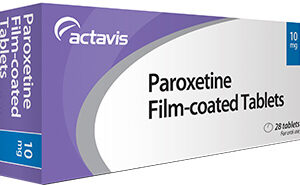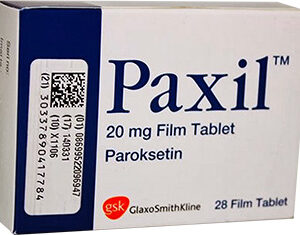Understanding Celexa Medication
Celexa is the brand name for citalopram, a selective serotonin reuptake inhibitor (SSRI) and an antidepressant medication. It is primarily used in the treatment of major depressive disorder (MDD) in adults. Citalopram enhances the activity of serotonin, a neurotransmitter that helps regulate mood, in the brain.
Chemical Composition
Celexa contains the active ingredient citalopram hydrobromide, which is a racemic bic phthalane derivative designated as (±)-1-(3-dimethylaminopropyl)-1-(4-fluorophenyl)-1,3-dihydroisobenzofuran-5-carbonitrile, HBr with a molecular formula of C20H22BrFN2O. The molecular weight is 405.35.
Available Dosage Forms
Celexa is available in both tablet form and as an oral solution. Tablets come in dosages of 10 mg, 20 mg, and 40 mg. The oral solution is available as a 2 mg/mL, which is bioequivalent to the tablet form.
Administration Guidelines
Patients should be advised to take Celexa once daily, either in the morning or in the evening, with or without food. It is essential to maintain consistent medication levels in the body; therefore, it should be taken at approximately the same time every day. The tablet should be swallowed whole and not chewed or crushed.
Starting and Adjusting Dosage
The recommended dose for starting Celexa treatment is 20 mg per day. Depending on the patient’s response to the medication, the dose may be increased to a maximum of 40 mg per day. Dose adjustments should not occur at intervals of less than one week to allow for the assessment of drug efficacy.
Missed Dose Management
If a dose is missed, it should be taken as soon as the patient remembers. However, if it is close to the time for the next dose, the missed dose should be skipped, and the regular dosing schedule should resume. Patients should not take double doses to make up for a missed dose.
Drug Interactions and Precautions
Celexa has the potential to interact with other medications, including monoamine oxidase inhibitors (MAOIs), other SSRIs, serotonin-norepinephrine reuptake inhibitors (SNRIs), and drugs that prolong the QT interval or are metabolized by the enzyme CYP2C19. An interval of 14 days should be allowed between discontinuation of an MAOI and initiation of Celexa therapy or vice versa.
Effectiveness and Efficacy
Studies have shown that Celexa is effective in treating major depressive disorder when compared with placebo. Improvements have been reported in mood, sleep, appetite, and energy levels, as well as decreased feelings of worthlessness and guilt.
Metabolism and Elimination
Citalopram is metabolized in the liver mainly by the enzymes CYP2C19 and CYP3A4, with minor contributions from CYP2D6. The metabolites of citalopram are demethylated and didemethylated compounds, which are considered less pharmacologically active. Citalopram and its metabolites are primarily excreted via the kidneys, with about 10% of the dose excreted unchanged.
Potential Side Effects
Common side effects associated with Celexa include nausea, dry mouth, somnolence, insomnia, increased sweating, and sexual dysfunction. Less common side effects can include weight changes, tremor, and gastrointestinal disturbances.
Use in Special Populations
Special caution is necessary when prescribing Celexa to pregnant women, nursing mothers, and pediatric patients, as well as adults over the age of 60. The effects of citalopram have been studied less extensively in these populations, and such patients may react differently to the medication. Dose adjustments may be necessary.
Overdose Considerations
In case of overdose with Celexa, symptoms can include nausea, dizziness, tachycardia, tremor, agitation, and rarely, unconsciousness. Medical help should be sought immediately, and supportive care is the primary treatment. There is no specific antidote for Celexa overdose.
Storage and Handling
Celexa tablets and oral solution should be stored at 25°C (77°F), with excursions permitted to 15-30°C (59-86°F). The medication should be kept in a tightly closed container away from light and moisture, and out of reach of children and pets.
Pharmacokinetic Profile
Celexa exhibits linear pharmacokinetics with low inter-individual variability. It has an average half-life of approximately 35 hours, which supports its once-daily dosing schedule. Steady-state plasma levels are achieved within 1-2 weeks of dosing. Its bioavailability is unaffected by food intake.
Discontinuation of Therapy
When discontinuing Celexa, it is recommended that the dosage be gradually reduced to minimize potential discontinuation symptoms, which can include mood changes, irritability, agitation, dizziness, sensory disturbances, and confusion. Patients should be monitored closely during this period.






Reviews
There are no reviews yet.